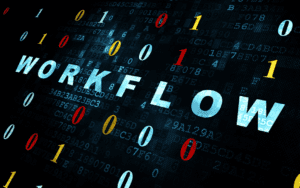Introduction
Organizations are often unsure of what type of software they need, which software is a luxury and which software is an absolute necessity. Modern cloud software has developed at lightning speed, accelerated by the dispersed workforce, where cloud applications integrate in a many-to-many link to solve complex business requirements.
Tax management software and finance software, or accounting software, are two different types of software, often mistaken as being similar or provided by the same software providers, which is not the case.
What is finance software?
Finance software is a type of computer software that automates many financial tasks, such as planning budgets, tracking and analyzing financial transactions, and calculation of tax liabilities. Finance software can be used to record transactions, maintain and update business records, track resources and produce reports.
It is generally accepted that finance software is a necessity for all businesses, albeit there is a plethora of options to suit companies of all shapes and sizes. The large ERP software companies who provide finance software as part of their suite include SAP, Oracle, Microsoft Dynamics, Sage X3 and many others that include modules for inventory management and more. Finance software for a small business is offered by providers like Xero and Sage, most of which are exclusively cloud based with no requirement for on-premise infrastructure, often a key objective for a business owner.
As essential as finance software is, the solutions are far from being comprehensive when compared with the total scope of the work expected of a finance professional. The output of a finance software product is reports which summarize, total and account for all the inputted transactions that are entered into it. Some finance software calculates the tax liability, typically for indirect taxes such as VAT or GST, and will submit that filing directly into the revenue authority electronic tax filing platform.
In the UK, all major software is required to have features and functionality that submits the financial data directly into the revenue authority, HMRC. In South Africa, Xero and Sage both submit the VAT201 directly into SARS eFiling.
But that is where finance software stops, and tax management software begins.

What is tax management software?
Companies use tax management software to simplify the complexity of managing internal tax procedures and external interaction with tax authorities, to help maintain tax compliance, and to track and do tax reporting. It isn’t a platform that is just for tax season!
Tax Management software is not just an extension of finance software, but a comprehensive tool that assists finance or tax professionals in all aspects of tax preparation. It’s a critical component that empowers them to perform their work, which often involves more than just simple tax calculation.
Small companies don’t usually have an employee dedicated to managing their taxes and outsource this to an external tax practitioner or accounting firm that utilises tax practice management software to prepare, submit and track all their respective customer tax liabilities and submissions directly to the revenue authority.

What are the requirements of a tax management software?
I recently had the pleasure of meeting a company that had tasked their internal IT department with implementing a “tax management system project”. This group of companies, with a centralised function managing 100 legal entities, was struggling to keep up with the sheer volume of administration and compliance required to maintain their performance as a tax function. So much so that they were willing to take matters into their own hands and build their system to streamline their operations.
So, what should a tax management software do, that a finance software does not? The following is a non-exhaustive list of the solutions the best tax software will provide:
- Tax obligation structure: This involves capturing the legal entity structure and all of the tax obligations associated with those entities, including the frequency and properties thereof, for tax planning.
- Submission and payment deadline reminders: This is a deadline reminder system that emails notifications to the relevant user of the upcoming and immediate deadlines to submit returns or make payments to the revenue authorities and comply with local tax law.
- Job cards for every tax submission: To commence tax preparation, create a job card for every company’s tax filing obligation.
- Document storage: Storage of working papers, reconciliations, invoice lists, top 10 transactions, etc.
- Review & sign off: Once a tax preparer completes a document, it becomes ready for review, including reassignment to make adjustments before submission.
- Analytic review: This feature automatically analyses the month–on–month variation in gross and taxable amounts for each line item of the tax return, including the ability to comment.
- General ledger reconciliation: Compare the tax payable/refundable and the general ledger balance by reconciling differences.
- SARS eFiling integration: Complete the tax form and push the tax submission directly to the revenue authority using the tax management software.
- SARS eFiling robot: It continuously checks with the revenue authority for multiple purposes, including correspondence and the statement of account (SoA) values for each tax type, effectively monitoring compliance.
- Record keeping: All submissions are kept in a permanent, encrypted, and cloud-stored solution that cannot be lost, maintaining compliance with record-keeping obligations.
- Tax reporting: This feature tracks all submissions and payments to the revenue authority in its tax reports, monitoring tax compliance and reporting with a single click.
- A tax management software should be able to provide all of these features for all direct and indirect tax types, including corporate tax, VAT/GST, sales tax, payroll/employee tax, corporate income tax.
Examples of tax management software
Konsise is digital tax management and tax complaince software platform that does all of the above while maintaining an audit trail of all activity and meets the record keeping requirements of any revenue authority. Konsise includes customer support as part of its standard offering.
Konsise can help you:
- Plan, organise and submit tax obligations in a single platform
- Automate tax compliance with a fit-for-purpose solution
- Reduce risk of lost records when staff leave
- Decrease reliance on SARS eFiling with direct integration


